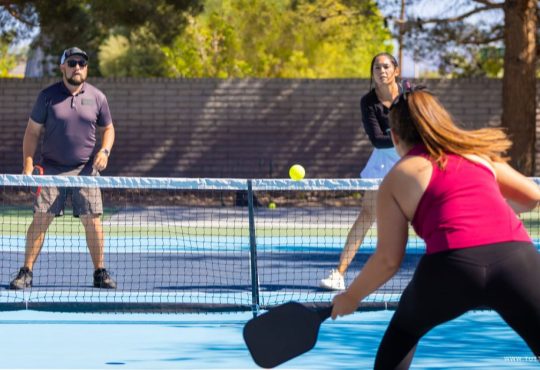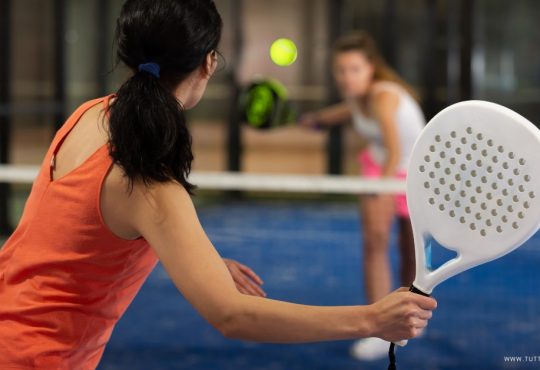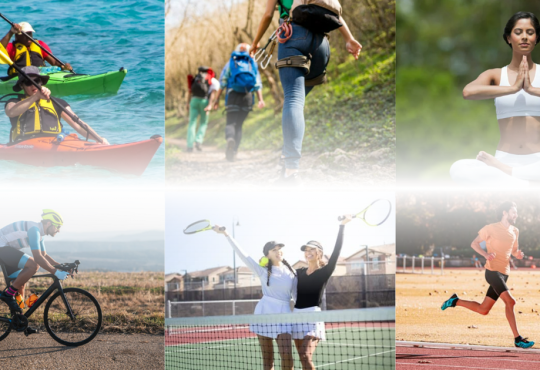Rock climbing has surged in popularity in recent years, particularly among women. With its blend of physical challenge, mental strategy, and a supportive community, rock climbing offers a unique appeal that other sports might lack. Whether you’re scaling indoor walls or tackling natural rock formations, this sport can provide an incredible sense of accomplishment and empowerment. But why is rock climbing such a fantastic sport for women, and what do you need to know before you start? Let’s delve into the details.
Why Rock Climbing is Great for Women
Physical Strength and Conditioning
Rock climbing is a full-body workout that engages multiple muscle groups simultaneously. It builds strength in your arms, legs, core, and back. For women, who might often hear that they lack upper body strength, climbing can be a powerful way to develop those muscles. Additionally, climbing improves flexibility and balance, making it an excellent all-around fitness activity. Unlike traditional gym workouts, climbing provides functional strength as you maneuver your body in various ways. This helps in daily activities and reduces the risk of injury.
Moreover, climbing is an excellent cardiovascular workout. The continuous movement and effort required to climb, especially on longer routes, elevate your heart rate and improve cardiovascular endurance. This combination of strength training and cardio makes rock climbing a comprehensive fitness activity that can significantly enhance your overall health and well-being.
Mental Toughness and Problem Solving
Climbing isn’t just about physical strength; it’s also about mental agility. Each route or “problem” you face on the climbing wall requires strategic thinking and problem-solving skills. You need to plan your moves, think several steps ahead, and adapt quickly if things don’t go as planned. This mental challenge is a great way to build resilience and boost confidence. The problem-solving aspect of climbing helps in developing a sharp mind that can think quickly and efficiently under pressure.
The mental toughness gained from climbing translates to other areas of life. Facing and overcoming challenges on the wall can build self-efficacy, making climbers more confident in tackling obstacles outside the sport. Additionally, the focus and concentration required during climbing sessions can serve as a form of mindfulness, reducing stress and enhancing mental clarity.
Community and Support
The climbing community is known for being inclusive and supportive. Whether you’re at a climbing gym or out on the rocks, you’ll find people who are eager to offer encouragement and advice. This supportive environment is particularly beneficial for women, fostering a sense of belonging and camaraderie. Climbing gyms often host social events, competitions, and group climbs that create opportunities to build connections and friendships.
Women-specific climbing groups and events are becoming more common, providing a safe and encouraging space for women to climb and support each other. These groups focus on building skills, sharing experiences, and celebrating achievements. The camaraderie and shared passion for climbing within these communities can lead to lasting friendships and a robust support network.
Breaking Stereotypes
Rock climbing helps break down stereotypes about what women can and cannot do. It’s a sport that showcases strength, agility, and determination, challenging the outdated notion that women should stick to less demanding physical activities. Climbing empowers women to push their limits and achieve things they never thought possible.
Basics to Know Before You Start Rock Climbing
Types of Rock Climbing
- Bouldering: Climbing shorter routes without ropes but with crash pads for safety. It focuses on power and technique over height.
- Top-Rope Climbing: Climbing with a rope that runs from a belayer on the ground, through an anchor at the top, and back down to the climber. It’s a great way to start climbing as it offers a high level of safety.
- Lead Climbing: The climber attaches the rope to points on the wall as they climb. This is more advanced and requires significant skill and experience.
- Trad Climbing: Similar to lead climbing but the climber places their own protection gear as they ascend. This is often done outdoors on natural rock.
Essential Gear
- Climbing Shoes: Specially designed to provide grip and support on climbing surfaces.
- Chalk Bag: Chalk helps keep your hands dry and improves grip.
- Harness: Necessary for roped climbing, it keeps you securely attached to the rope.
- Belay Device and Carabiners: Essential for managing the rope and ensuring safety when top-roping or lead climbing.
- Helmet: Crucial for outdoor climbing to protect against falling rocks and bumps.
Safety Tips
- Learn from Experts: Take a class or find a mentor to teach you the basics of climbing and belaying.
- Check Your Gear: Always inspect your equipment before climbing.
- Communicate: Ensure clear communication with your climbing partner.
- Warm Up: Stretch and warm up your muscles to prevent injuries.
- Know Your Limits: Don’t push yourself too hard, especially when starting out.
Training and Technique
- Start Indoors: Indoor climbing gyms are a great place to start as they offer a controlled environment with various levels of difficulty.
- Focus on Technique: Good technique is more important than raw strength. Learn proper foot placement, body positioning, and efficient movement.
- Build Strength Gradually: Incorporate exercises like pull-ups, core workouts, and leg strengthening into your routine.
- Stay Consistent: Regular climbing and practice will help you improve over time.
Overcoming Challenges
- Fear of Heights: Start with low climbs and gradually increase the height as you become more comfortable.
- Grip Strength: This will develop over time. Use grip trainers and practice regularly.
- Plateaus: Everyone hits plateaus. Mix up your routine, try different types of climbing, and seek advice from more experienced climbers.
The Climbing Community and Culture
Inclusivity and Support
One of the most remarkable aspects of rock climbing is the community. Climbers are known for being welcoming and encouraging. You’ll find that people are often willing to share tips, cheer you on, and celebrate your successes, no matter how small. This sense of community can be incredibly motivating, especially for women who are new to the sport.
Opportunities for Women
There are many initiatives aimed at encouraging women to get into climbing. Women-specific climbing groups, classes, and events are becoming increasingly popular. These provide a supportive environment where women can learn and grow together. Look for local climbing clubs or online communities that offer resources and support for women climbers.
Role Models and Inspiration
Many women climbers have made significant achievements in the sport, serving as inspiration for others. Figures like Lynn Hill, who was the first person to free climb The Nose on El Capitan, and Ashima Shiraishi, a young prodigy known for her impressive climbs, show that women can excel at the highest levels of the sport. Following their journeys can be motivating and provide valuable insights into climbing.
Benefits Beyond the Wall
Health and Fitness
Regular climbing can lead to numerous health benefits, including improved cardiovascular health, muscle tone, and endurance. It’s a fun way to stay fit and healthy, making workouts feel less like a chore and more like an adventure.
Mental Well-being
The mental benefits of climbing are just as significant as the physical ones. Climbing can be a form of meditation, requiring you to focus entirely on the present moment. This focus can reduce stress and anxiety, providing a mental reset. The sense of achievement after completing a challenging climb can boost your mood and self-esteem.
Life Skills
The skills you develop while climbing—problem-solving, perseverance, and patience—are transferable to other areas of life. Climbing teaches you how to face challenges head-on and work through them, which can be beneficial in both personal and professional contexts.
Getting Started: A Step-by-Step Guide
Research
Before diving into rock climbing, it’s crucial to understand the different types available. Researching can help you find which style of climbing interests you the most. Here are the main types to consider:
- Bouldering: This involves climbing shorter routes without ropes but with crash pads for safety. It’s ideal for beginners because it requires less equipment and focuses on strength and technique.
- Top-Rope Climbing: This style uses a rope that runs from a belayer on the ground, through an anchor at the top, and back down to the climber. It’s a safe way to start and build confidence.
- Lead Climbing: This advanced form involves the climber attaching the rope to points on the wall as they climb. It requires more skill and experience.
- Traditional (Trad) Climbing: Similar to lead climbing but on natural rock, where climbers place their own protective gear. It’s the most gear-intensive and technically demanding form.
Understanding these types helps you choose the right starting point and set realistic goals.
Find a Gym
Locate a local climbing gym where you can take an introductory class. Climbing gyms are designed to cater to climbers of all skill levels, providing a safe and controlled environment to learn and practice. When selecting a gym:
- Check Reviews: Look for gyms with positive reviews, especially from beginners.
- Visit First: Tour the facility to ensure it has the features and routes that suit your level and goals.
- Ask About Classes: Ensure the gym offers beginner classes and has certified instructors.
Gyms also often host community events, competitions, and social nights, which can be a great way to immerse yourself in the climbing culture.
Get the Gear
Climbing requires specific gear, and most gyms offer rental options, making it easy for beginners to get started without a large initial investment. Essential gear includes:
- Climbing Shoes: These are specially designed for grip and precision. Renting initially allows you to try different brands and styles.
- Chalk and Chalk Bag: Chalk helps keep your hands dry, improving your grip on holds.
- Harness: Essential for roped climbing, it keeps you securely attached to the rope.
- Belay Device and Carabiners: Necessary for managing the rope during top-roping or lead climbing.
- Helmet: Crucial for outdoor climbing to protect against falling debris.
As you progress, you might want to invest in your own gear for a better fit and comfort.
Take a Class
Signing up for a beginner’s class is one of the best ways to start climbing. Classes provide structured learning from experienced instructors who can teach you the fundamentals of climbing, including:
- Basic Techniques: Learn how to use your feet effectively, body positioning, and how to move efficiently.
- Safety Procedures: Understand the importance of knot tying, belaying, and proper gear usage.
- Climbing Etiquette: Learn the unspoken rules of climbing gyms and outdoor climbing spots.
Classes also provide an opportunity to meet fellow beginners, fostering a supportive learning environment.
Join a Community
Connecting with other climbers can enhance your climbing experience and provide support as you progress. Look for women’s climbing groups or clubs in your area. These communities often organize group climbs, workshops, and social events. Joining a community can:
- Provide Mentorship: Experienced climbers can offer advice, tips, and encouragement.
- Foster Motivation: Climbing with others can keep you motivated and accountable.
- Create Friendships: Building relationships with like-minded individuals can make climbing more enjoyable and less intimidating.
Online forums and social media groups can also be great resources for finding climbing partners and learning from others’ experiences.
Practice Regularly
Consistent practice is key to improving your climbing skills and building confidence. Aim to climb at least once or twice a week. Regular practice helps:
- Build Strength: Develop the necessary muscles and endurance for climbing.
- Improve Technique: Refine your movements and efficiency on the wall.
- Gain Experience: Familiarize yourself with different types of holds, routes, and climbing styles.
Mixing up your routine by trying different types of climbs and incorporating complementary exercises like yoga and strength training can also be beneficial.
Stay Safe
Safety is paramount in rock climbing. Always follow established safety protocols and climb within your limits. Key safety tips include:
- Check Your Gear: Always inspect your equipment before each climb.
- Communicate Clearly: Ensure you and your climbing partner understand each other’s signals and commands.
- Warm Up Properly: Stretch and warm up your muscles to prevent injuries.
- Know Your Limits: Start with easier routes and gradually progress to more challenging climbs.
- Take Breaks: Listen to your body and rest when needed to avoid overexertion.
If climbing outdoors, ensure you’re familiar with the area and weather conditions, and always climb with a partner.
Conclusion
Rock climbing is a thrilling and empowering sport for women, offering a blend of physical challenge, mental strategy, and community support. It breaks stereotypes and fosters a sense of achievement and confidence. With the right knowledge and preparation, anyone can start their climbing journey and experience the many benefits it brings.
Whether you’re looking to build strength, improve your mental resilience, or simply find a fun and supportive community, rock climbing has something to offer. So, gear up, find a climbing gym, and take that first step on the wall. You might just discover a passion that will take you to new heights—both literally and figuratively.
With these insights and tips, you’re well-equipped to begin your rock climbing adventure. Remember, every climber starts as a beginner, and with practice and perseverance, you’ll soon be scaling new heights and celebrating your achievements. Happy climbing!





